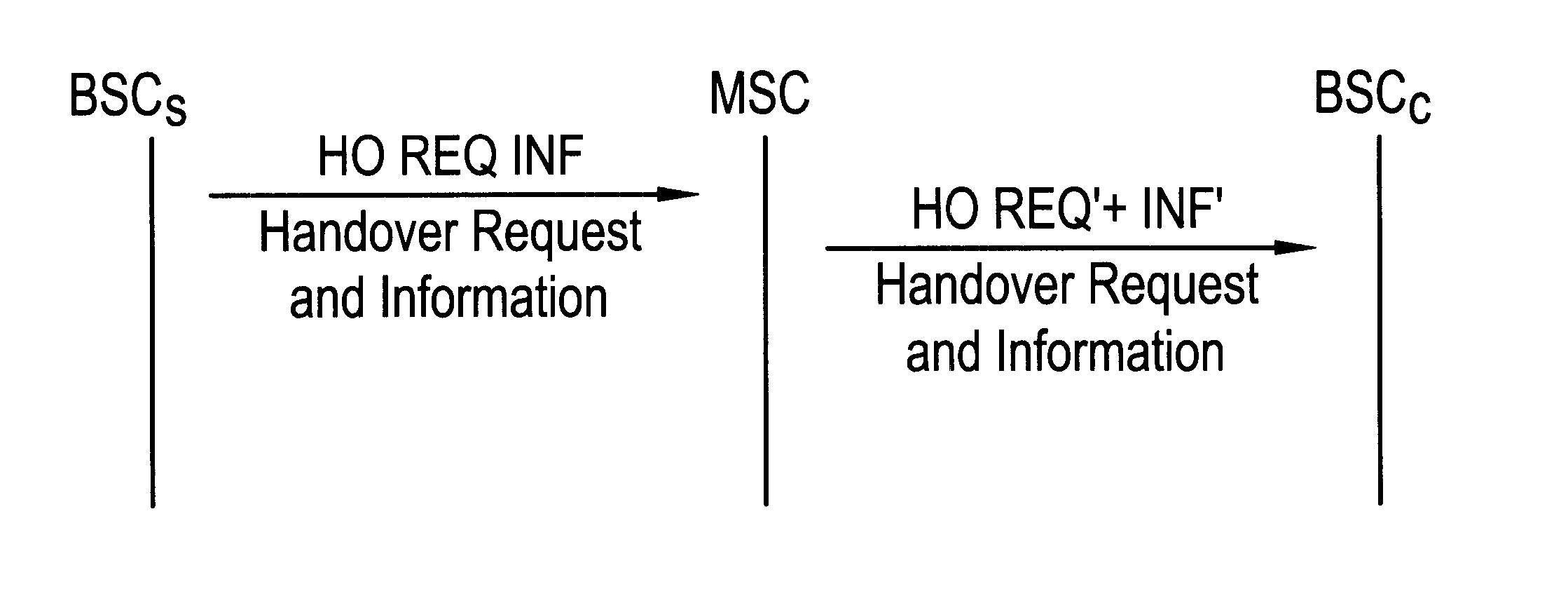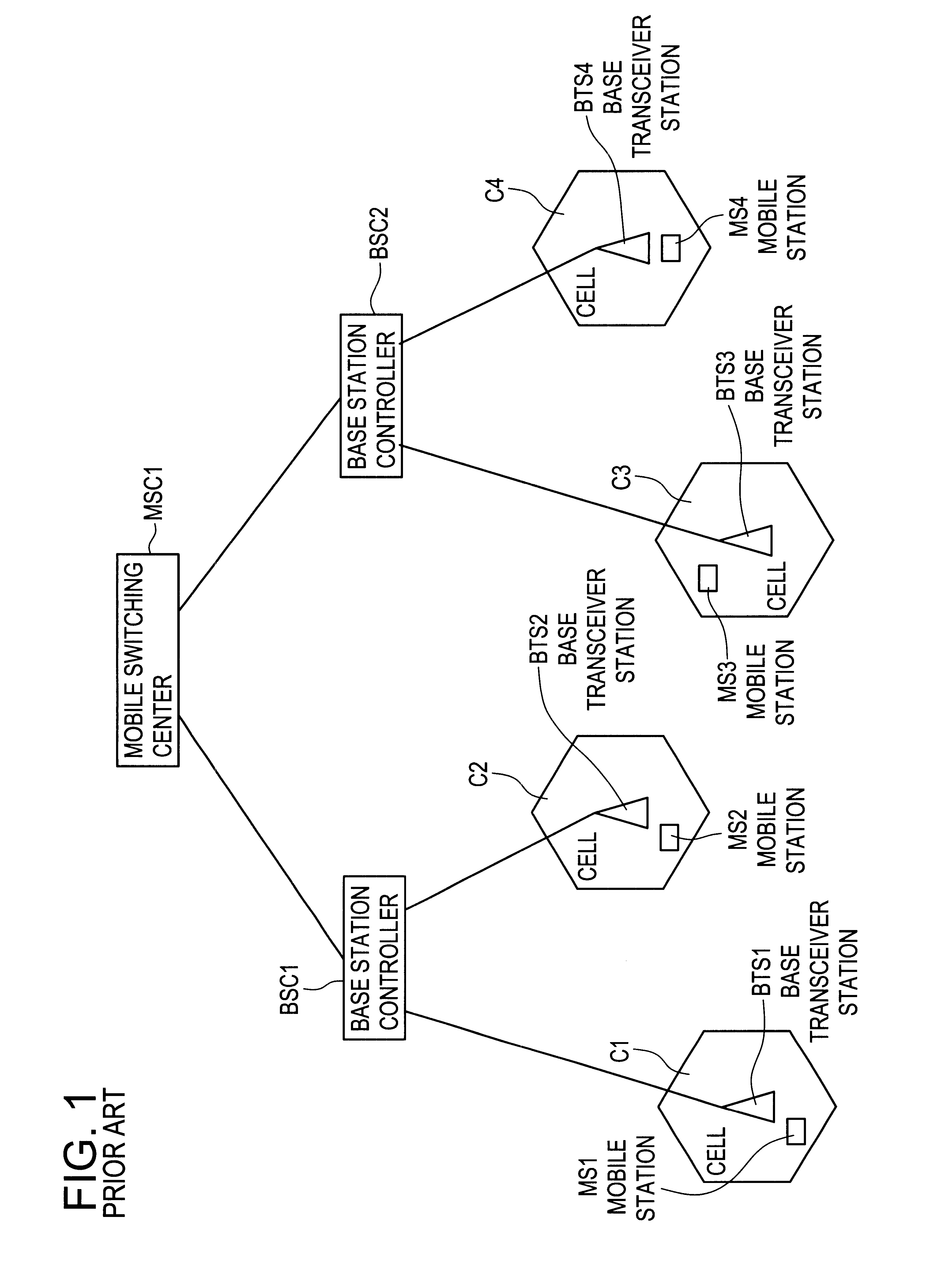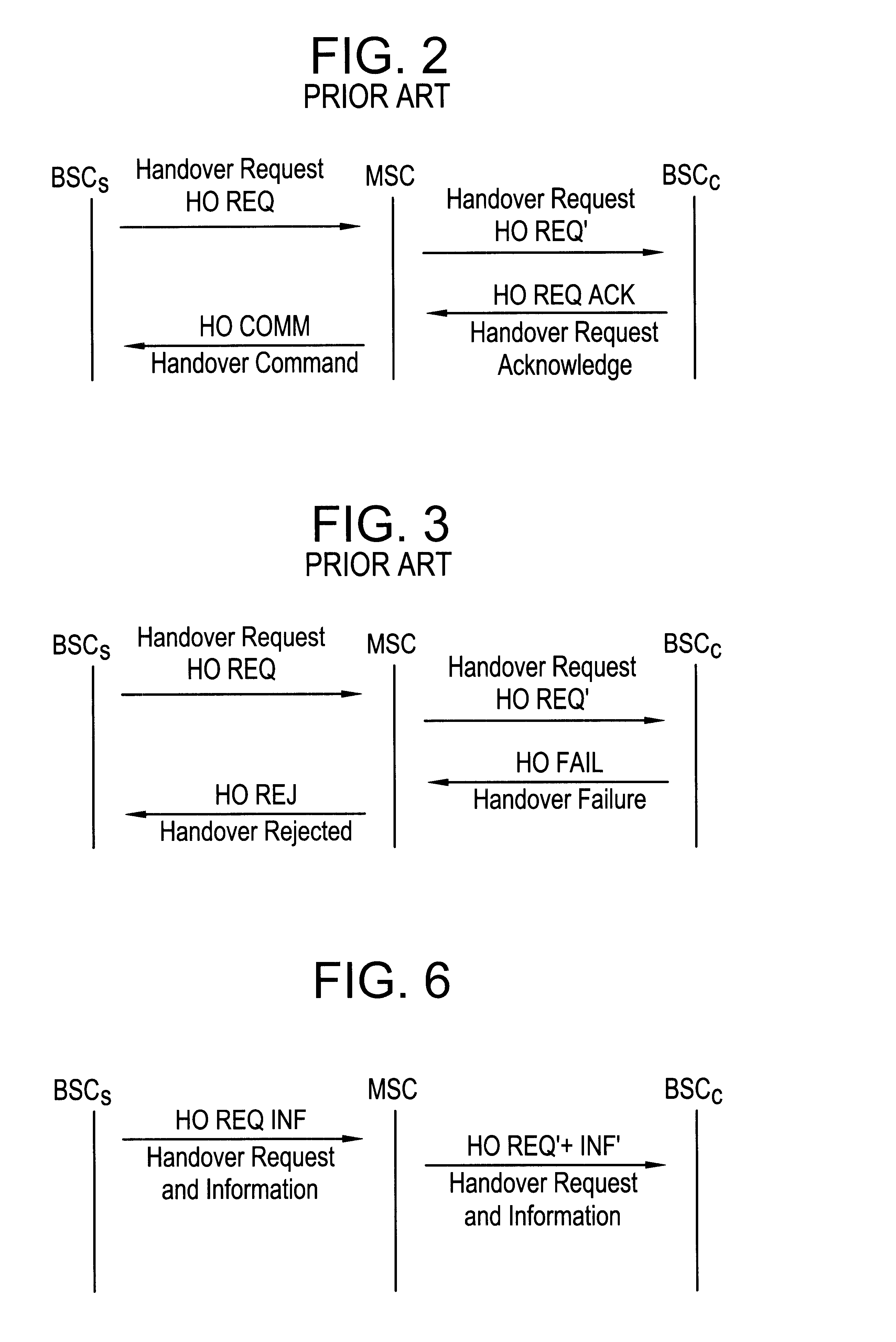Method of improving cooperation between entities during call handover
a technology of call handover and cooperation, applied in the direction of radio transmission, electrical equipment, transmission, etc., can solve the problems of unnecessarily longening the call handover time, degrading the quality of service, and affecting so as to improve the co-operation between entities and optimize the operation of the network
- Summary
- Abstract
- Description
- Claims
- Application Information
AI Technical Summary
Benefits of technology
Problems solved by technology
Method used
Image
Examples
Embodiment Construction
The present invention thus relates to a method of improving co-operation between entities in a cellular mobile radiocommunications network, during inter-cell call handover, during which a "new server cell" is chosen from a set of "candidate cells" as being a candidate cell towards which a requested handover is possible, candidate cells to which a requested handover is not possible being referred to as "rejected cells".
In accordance with the invention, to improve co-operation between entities of the network during "external" call handover, namely handover from a "current server cell" (such as cell C.sub.i shown in FIG. 5) controlled by a "current server entity" of the system (such as entity BSC.sub.i shown in FIG. 5) to a "new server cell" (such as cell C.sub.j shown in FIG. 5) controlled by a control entity that is distinct from said current server entity and that is referred to as the "new server entity" (such as entity BSC.sub.j shown in FIG. 5), said new server entity is informed...
PUM
 Login to View More
Login to View More Abstract
Description
Claims
Application Information
 Login to View More
Login to View More - R&D
- Intellectual Property
- Life Sciences
- Materials
- Tech Scout
- Unparalleled Data Quality
- Higher Quality Content
- 60% Fewer Hallucinations
Browse by: Latest US Patents, China's latest patents, Technical Efficacy Thesaurus, Application Domain, Technology Topic, Popular Technical Reports.
© 2025 PatSnap. All rights reserved.Legal|Privacy policy|Modern Slavery Act Transparency Statement|Sitemap|About US| Contact US: help@patsnap.com



